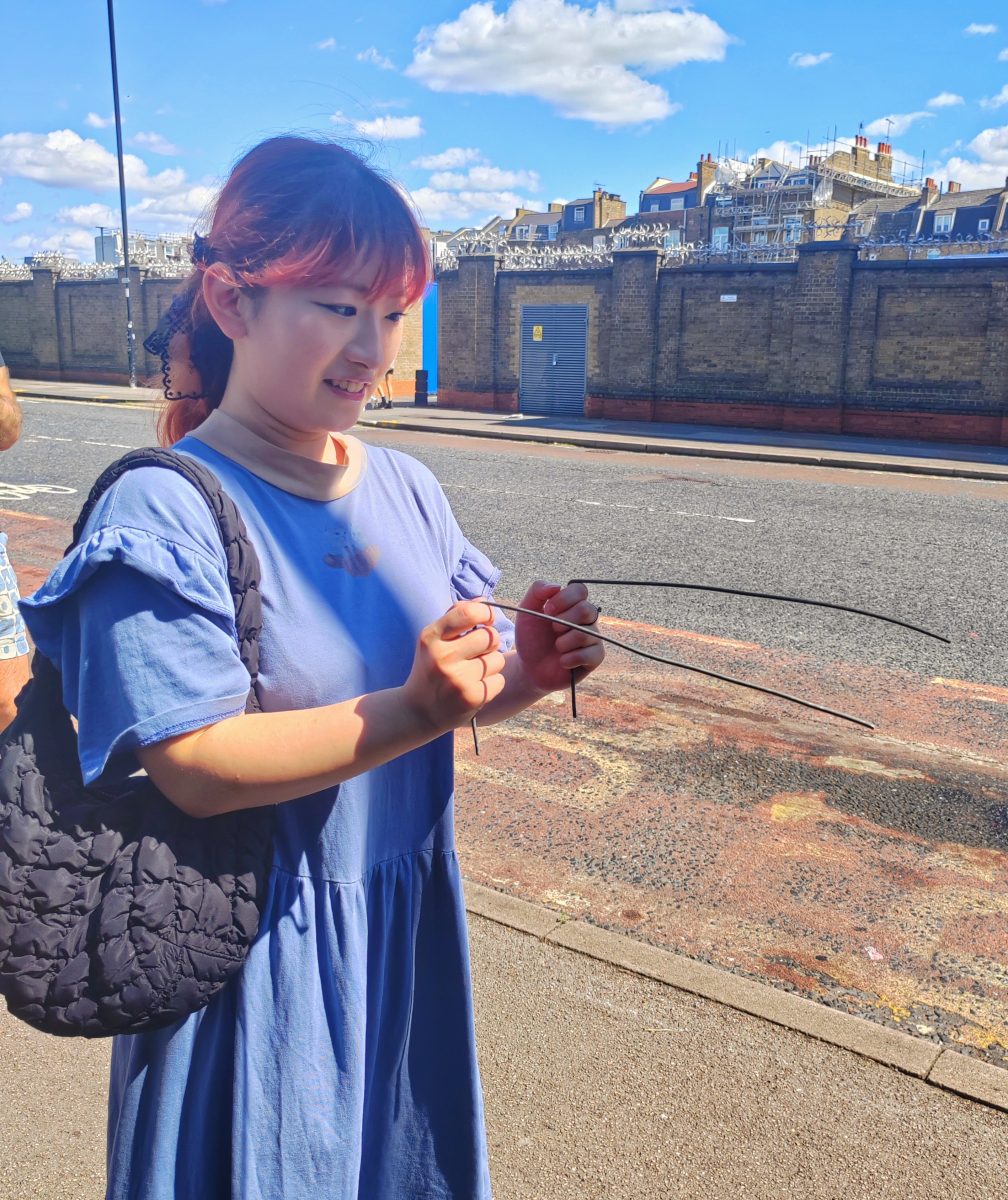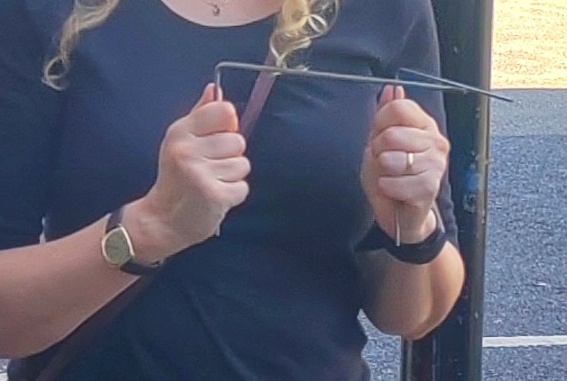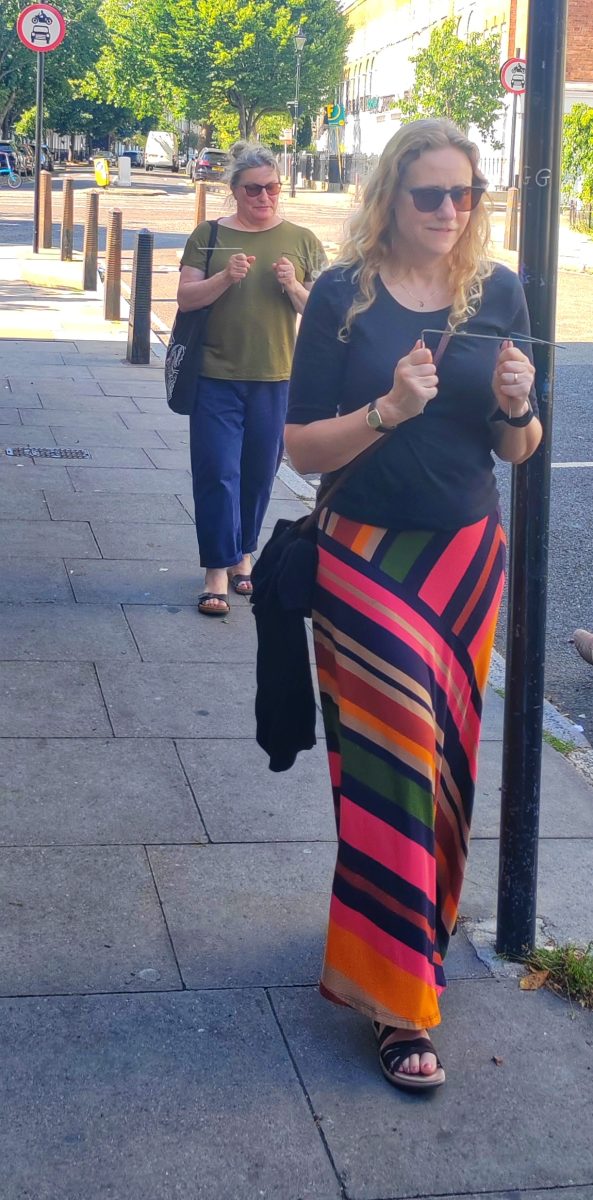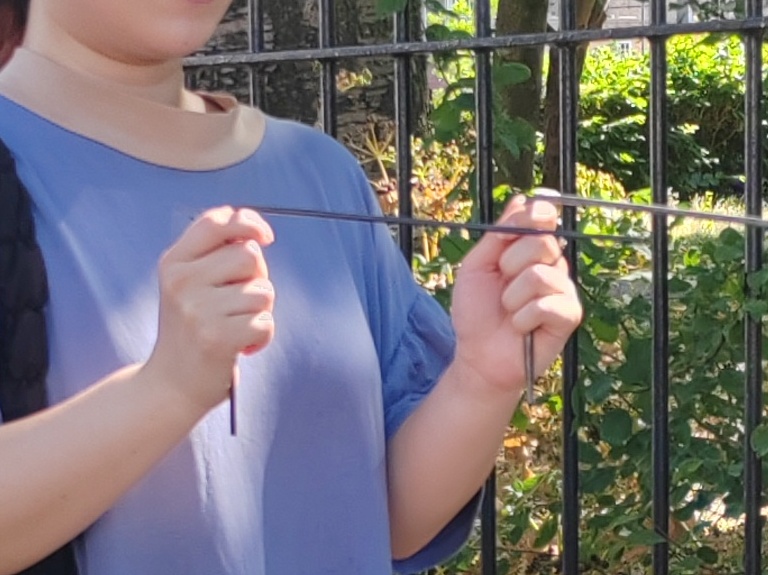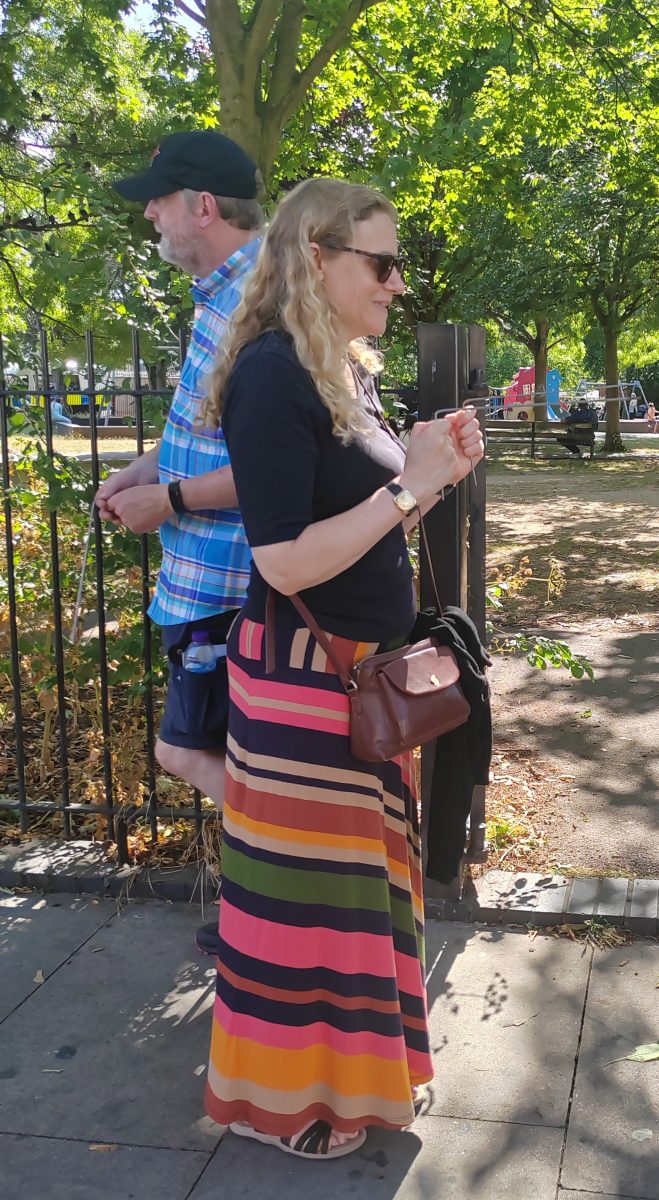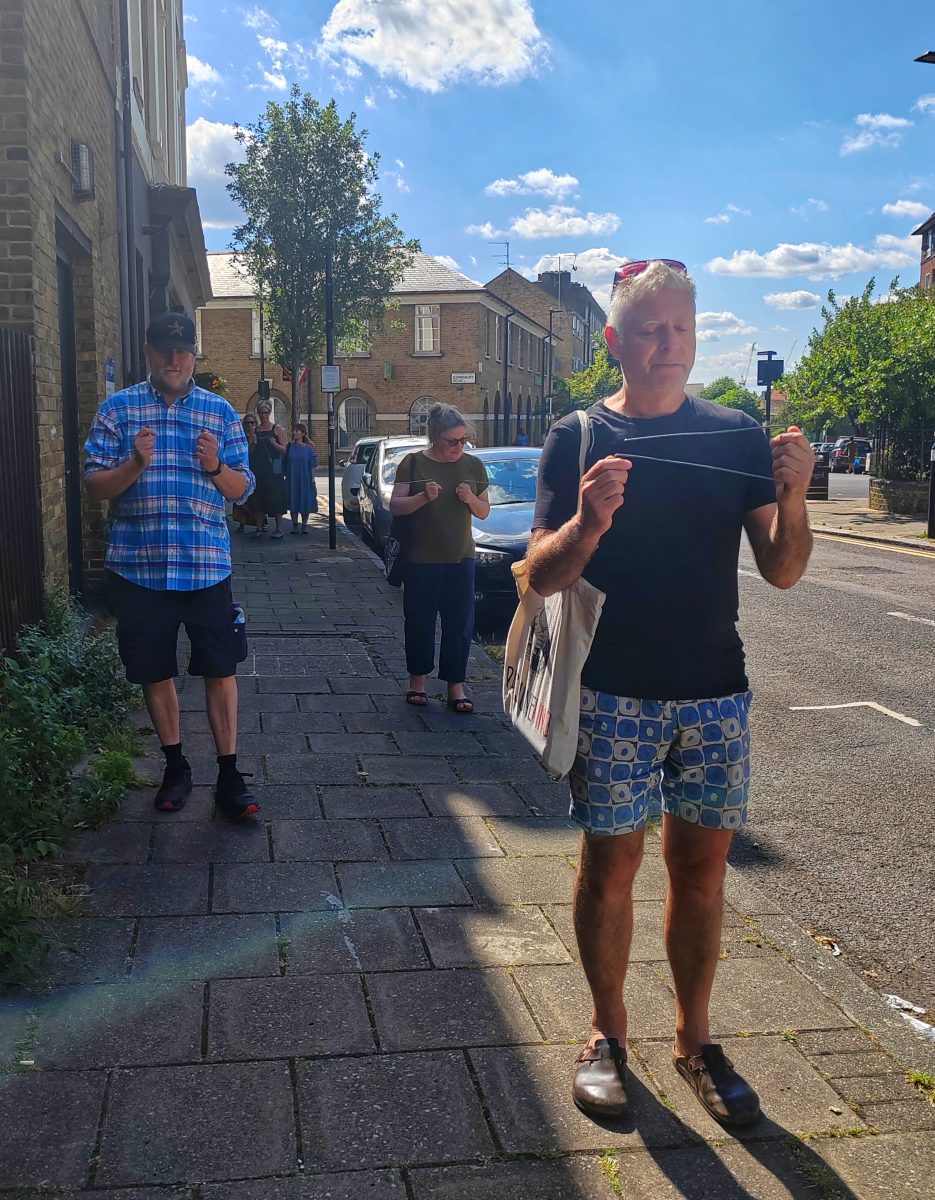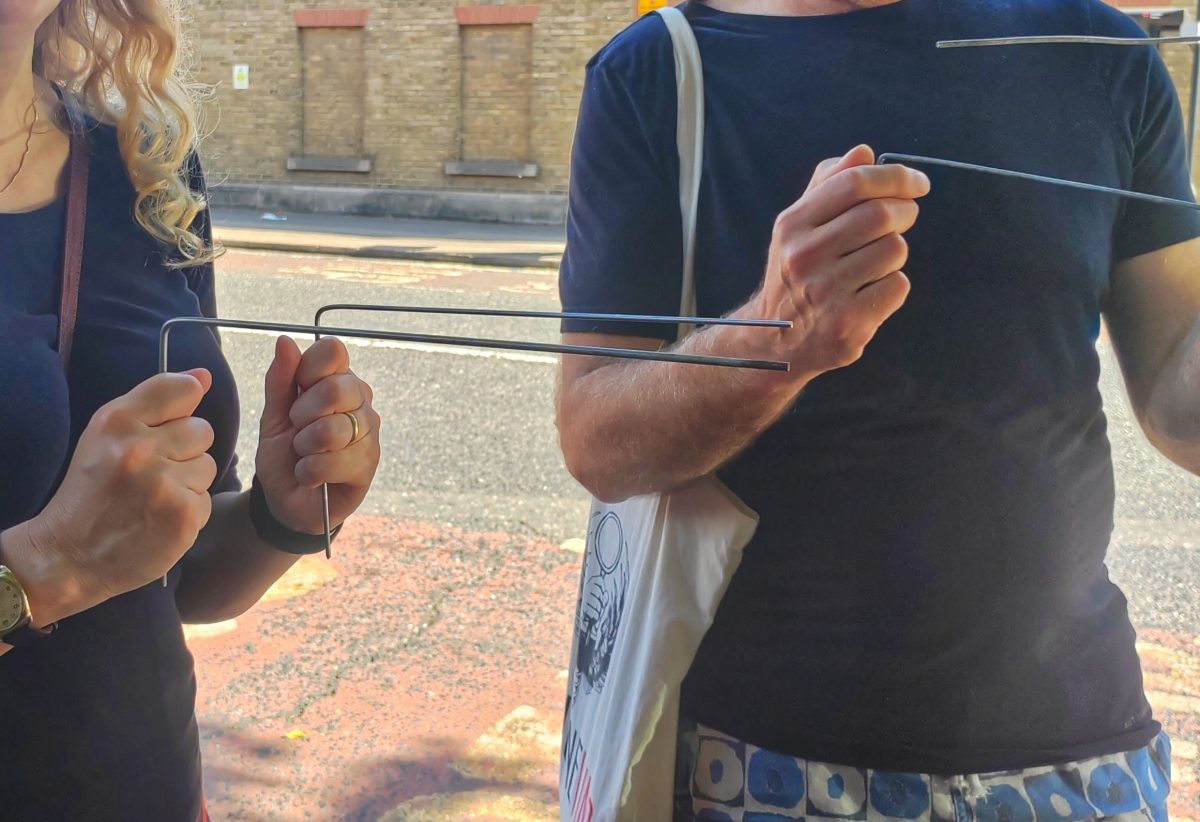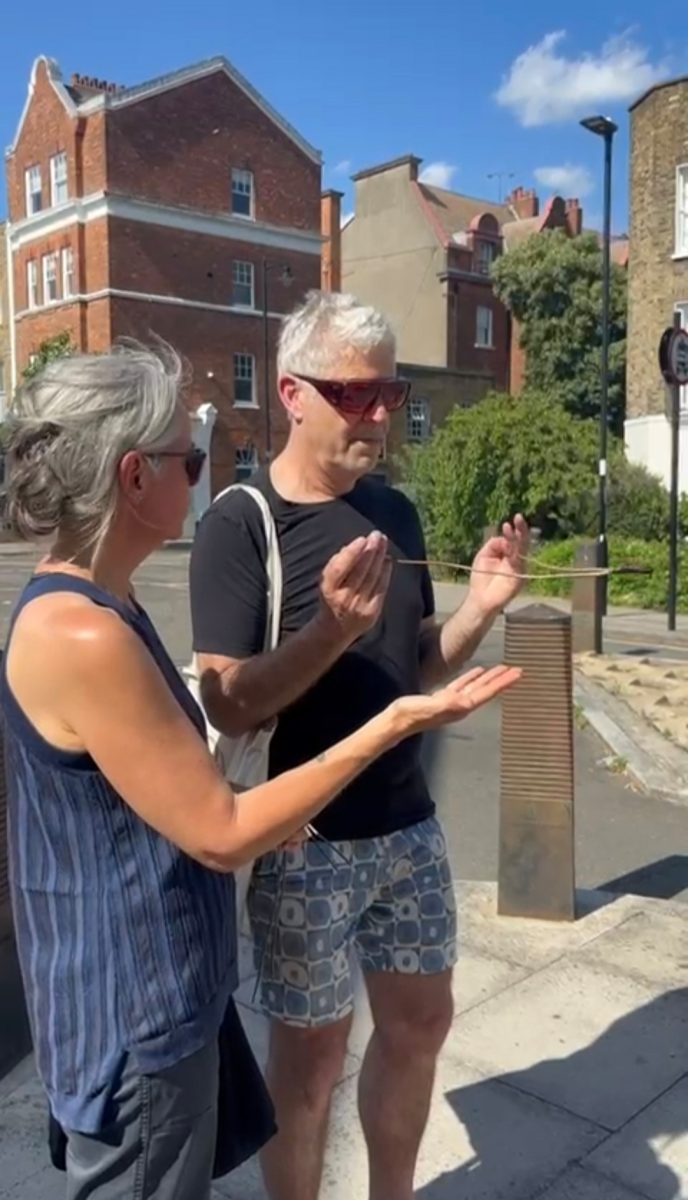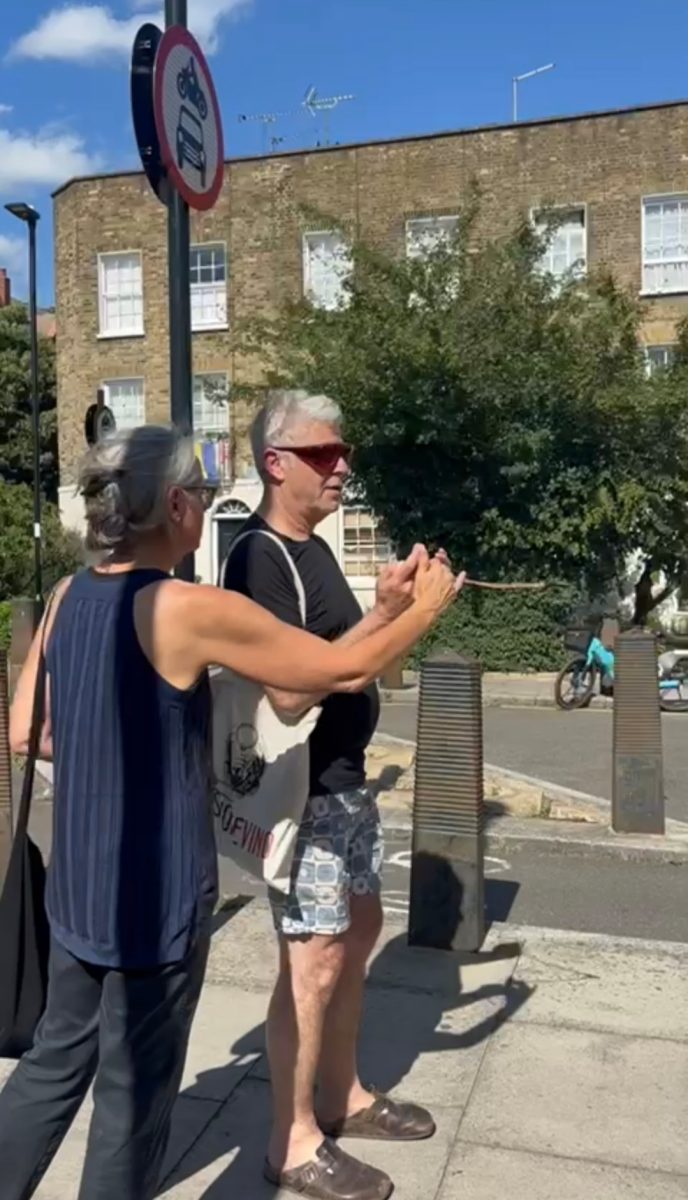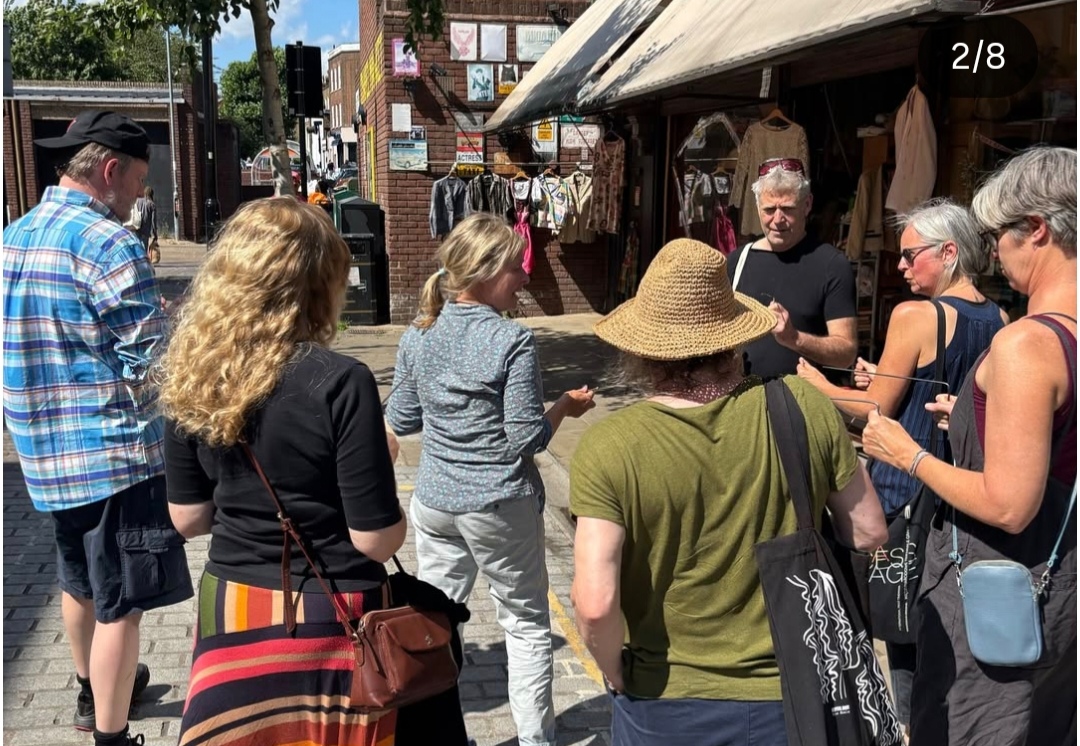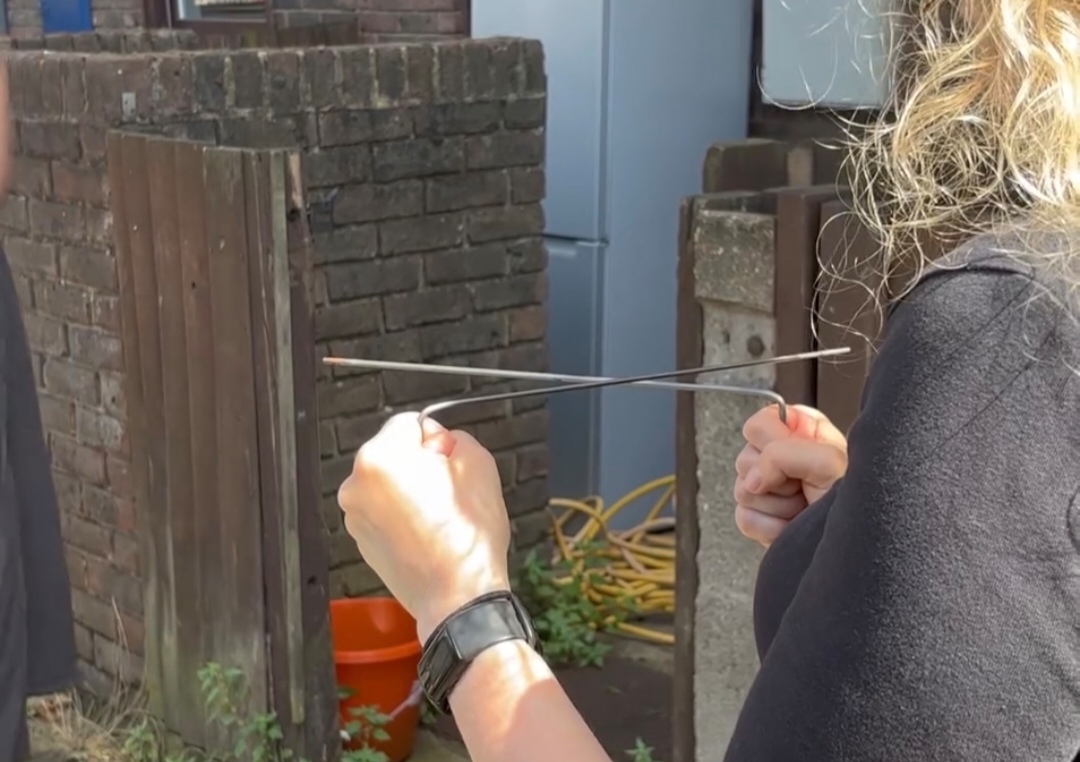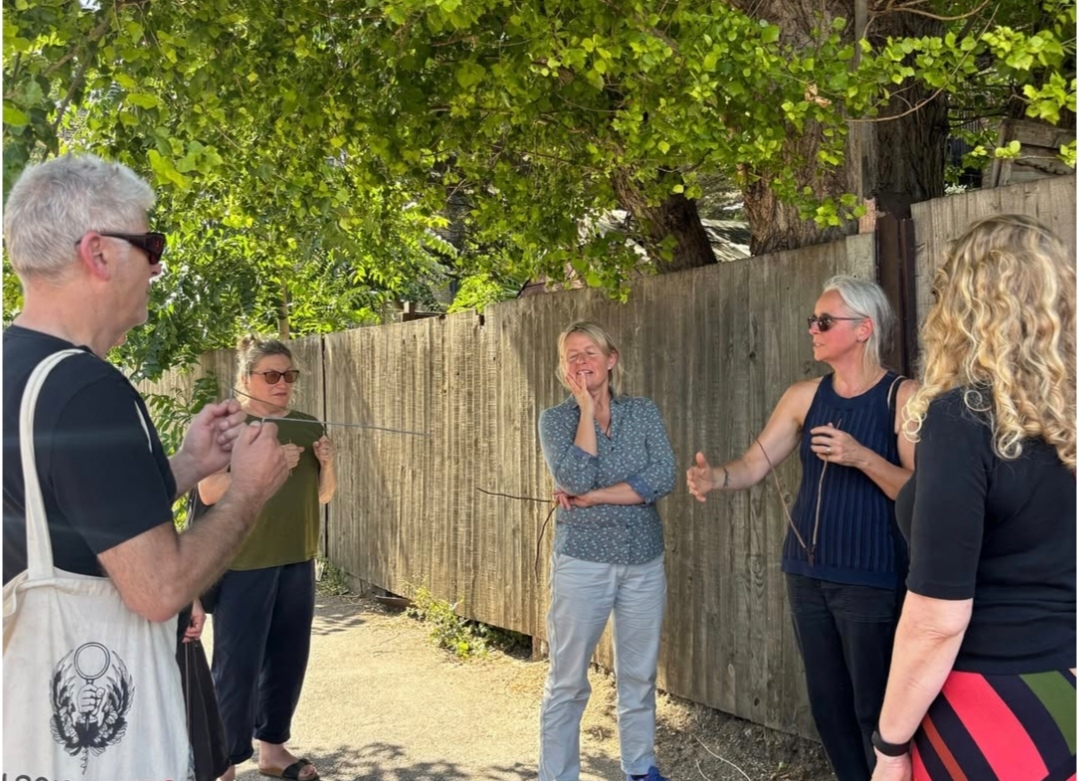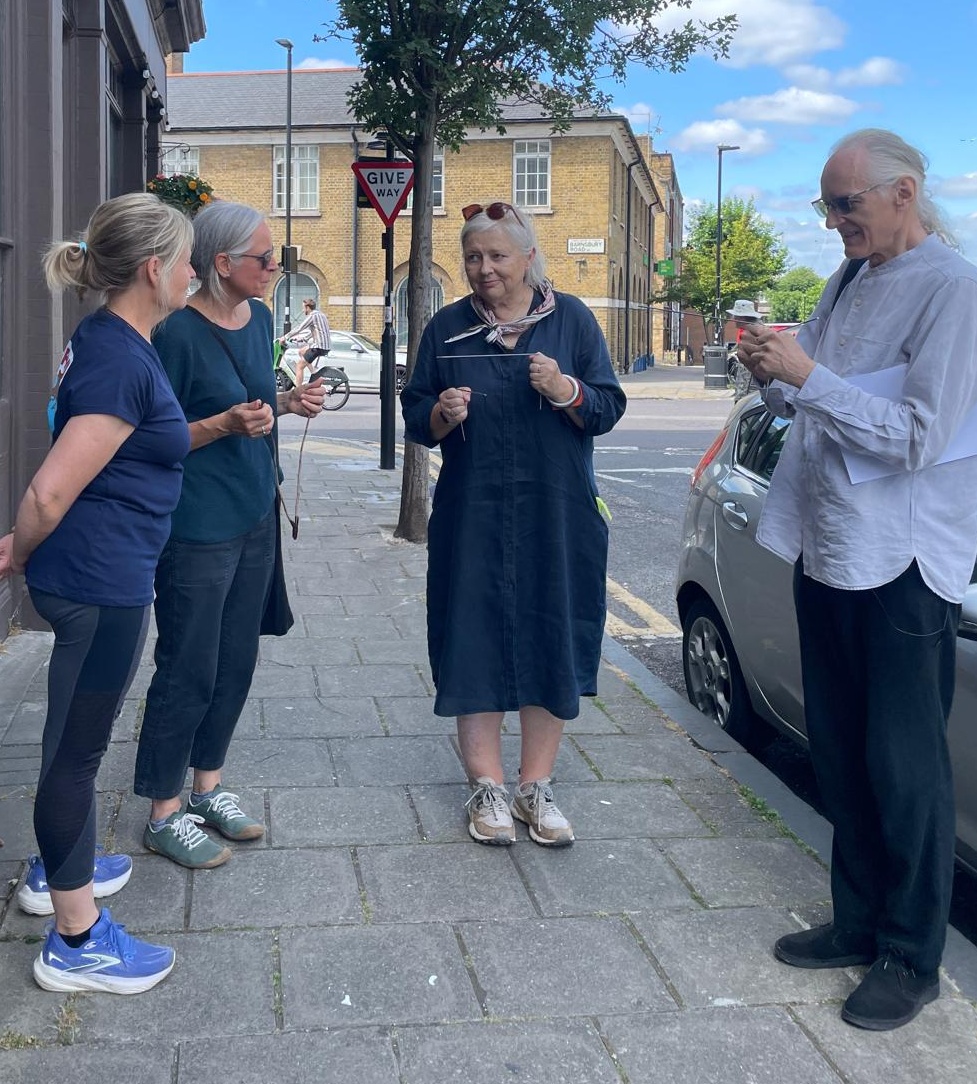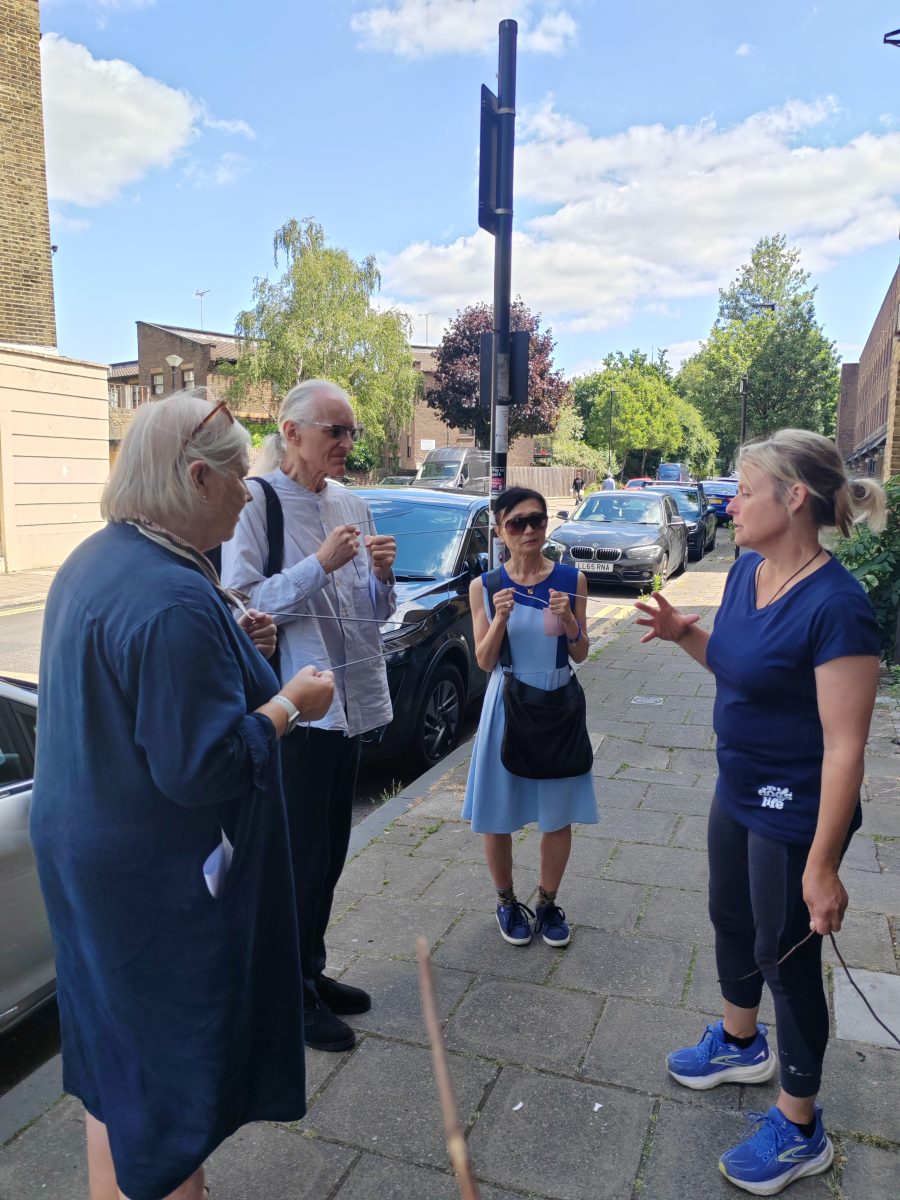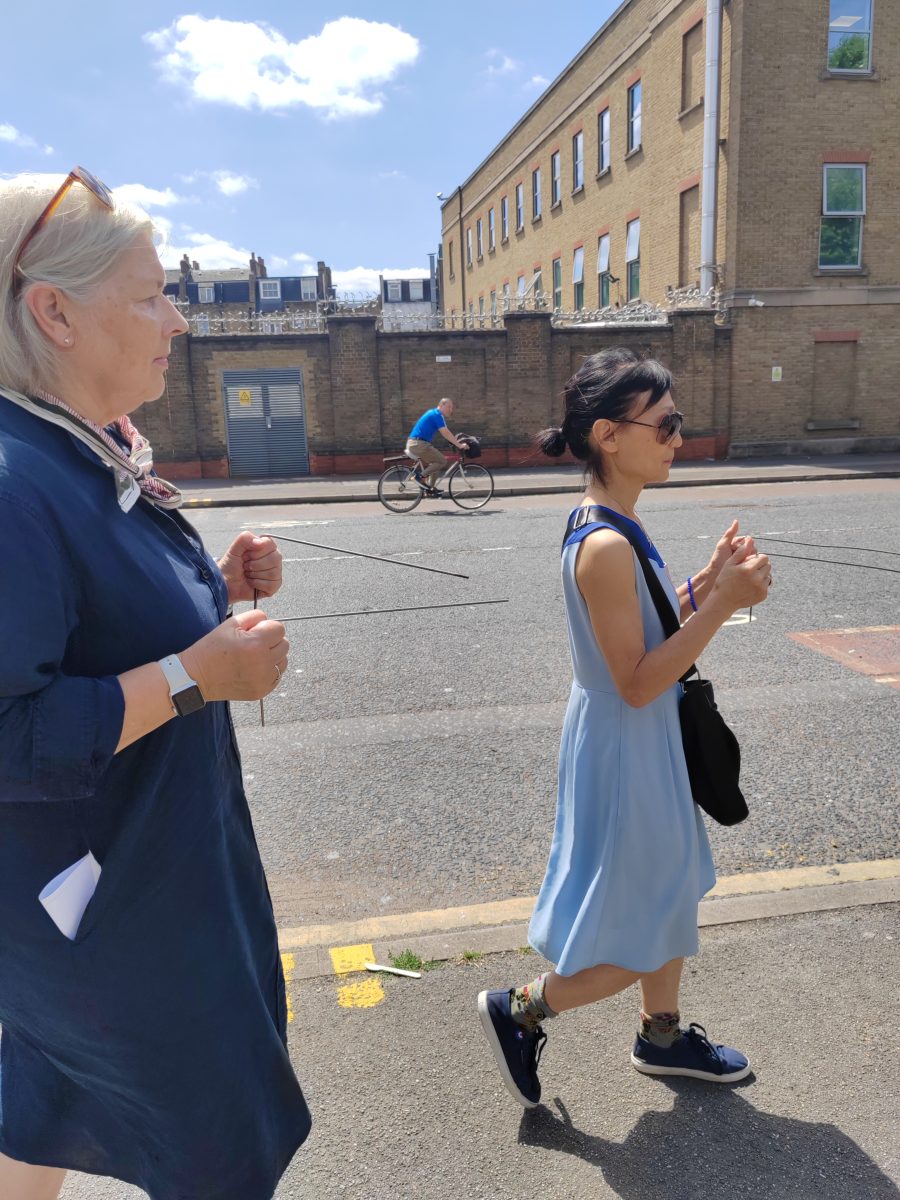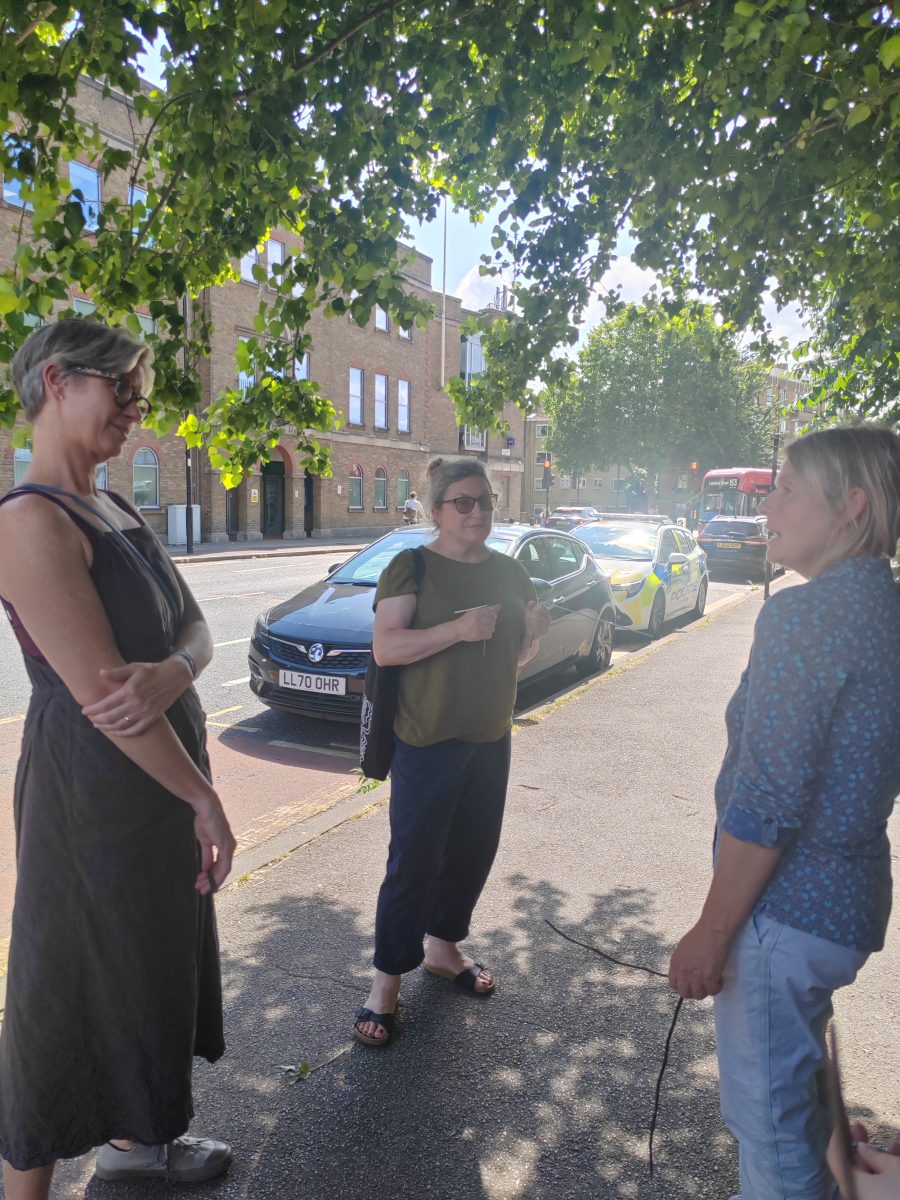Finding Centre – Natural Frequencies walking events June 2025
23 Jun 2025
"Other echoes inhabit the garden, shall we follow?" – TS Eliot
Water dowsing or Rhabdomancy is the practice of using a forked stick or a pair of metal rods to sense the presence of water. The process, practiced for hundreds of years, is particularly important in rural communities revealing what lies hidden.
As part of Natural Frequencies @WhiteConduitProjects, artist Tracy Hill @TCHill80 and Water Dowser Deborah Bell @debbell988 led two walking groups around Islington to reveal subterranean springs.
In Celtic and Gaelic traditions, hazel trees are associated with wisdom and poetic inspiration. Occupying a liminal space between occultism and capitalism, dowsing is used by those seeking to understand the earth’s energies and also by those seeking to exploit its resources.
The phenomenon of dowsing manifests itself in a uniquely personal expression revealed through the walking body, wood or metal. Some dowsers prefer branches from particular trees, and some prefer the branches to be freshly cut. Hazel and Hawthorn twigs were traditionally popular in Europe and witch-hazel in the United States, as were branches from willow or peach trees. Many modern dowsers use a pair of L-shaped metal rods.
Holding the ends of a Y-shaped hazel twig or two L-shaped metal rods lightly in their hands, our dowsers walked across the area of land between White Conduit Projects and Culpeper Community Garden. The presence of spring was revealed when our dowsers crosses over the edges and centre of the body of water. Both the edge and centre points were revealed with a different signal from the dowsers stick or rod, for example the forked Hazel either dipped towards the earth, or lifted towards the sky, for those holding metal rods, the spring was indicated by the crossing of the rods or movements left or right.
Our dowsers then calculated the location, depth and direction of the spring by counting their walking stride and observing the unique signals given by their wood or rods under the guidance of Deb.
Exploring the body as a receptive threshold for sensing unseen energies and forces, Hill and Bell led walkers through familiar spaces and landscapes observing the movements of the hazel and rods. In an open-ended and collaborative conversation between body and place, the groups revealed invisible geologies and veins running below our feet.
Together the groups sensed ‘the centre points’ (the main flow) of a running spring under Culpeper Community Garden, sitting at around 280 feet or 85 metres below ground, flowing east under the park and garden.
In addition, the groups also discovered ‘dead water’ sitting under Tolpuddle Street and Sainsbury’s carpark at approx. 30 meters below ground. This is a body of water which is not flowing.
Unseen landscapes and invisible energies underpin Tracy Hill’s exhibition Natural Frequencies. Reacting to visual and sonic rhythms and traces, Hill’s work questions how the walking body acts as a receiver for unseen energy and explores how artistic practice can decode the multi-sensory signals received while walking. A collaborative partnership with Deborah Bell has developed a significant new body of work and way of working, aligning multiple disciplinary fields.
‘Those granted the gift of seeing more deeply can see beyond form and concentrate on the wondrous aspect hiding behind every form, which is called life.’ Hilma af Klint (1862-1944)
Thank you to The University of Central Lancashire, The Institute of Creativity, Communities and Culture and Artlab Contemporary Print Studios who supported and funded this event and White Conduit Projects who hosted the two days of events.
